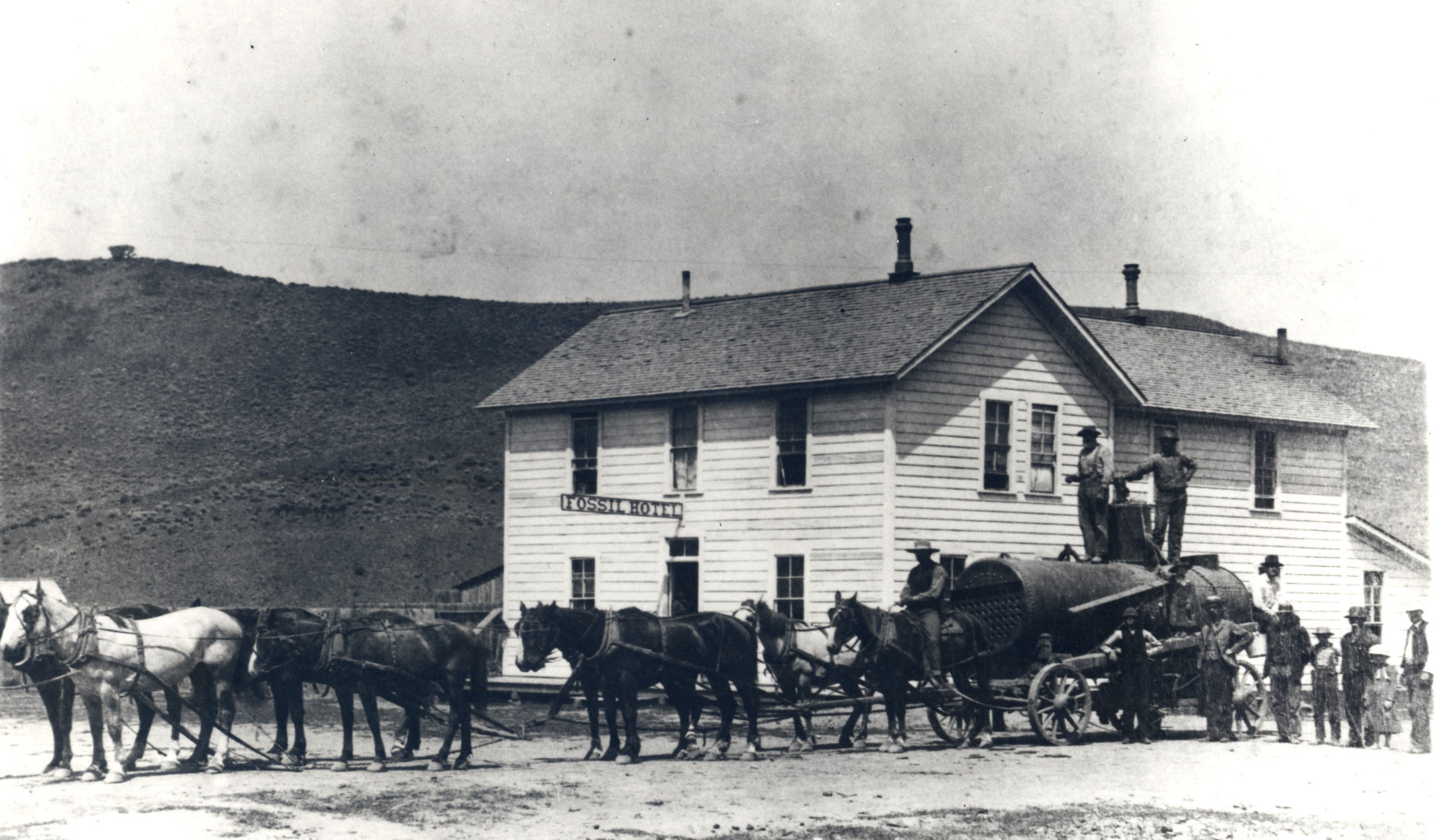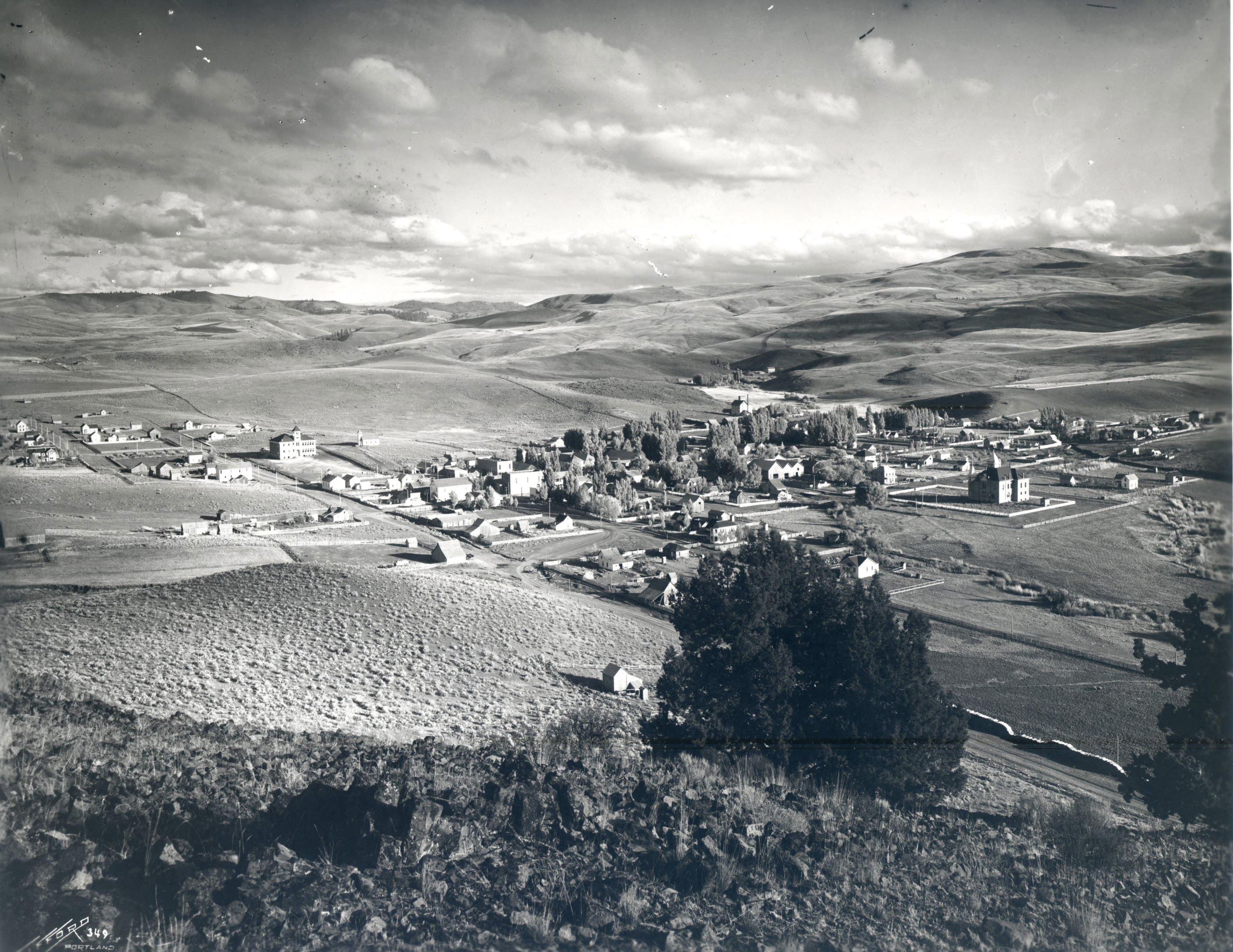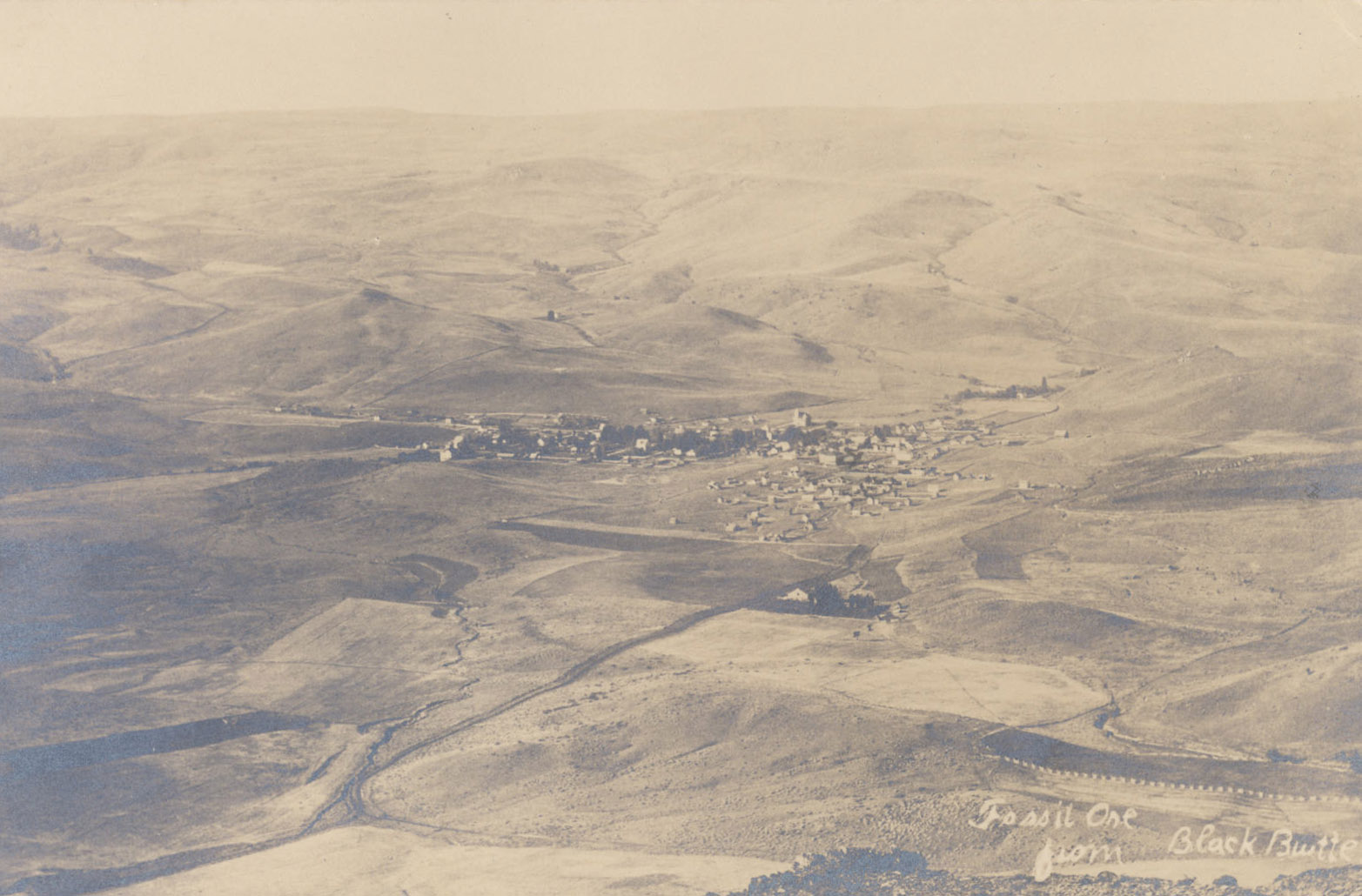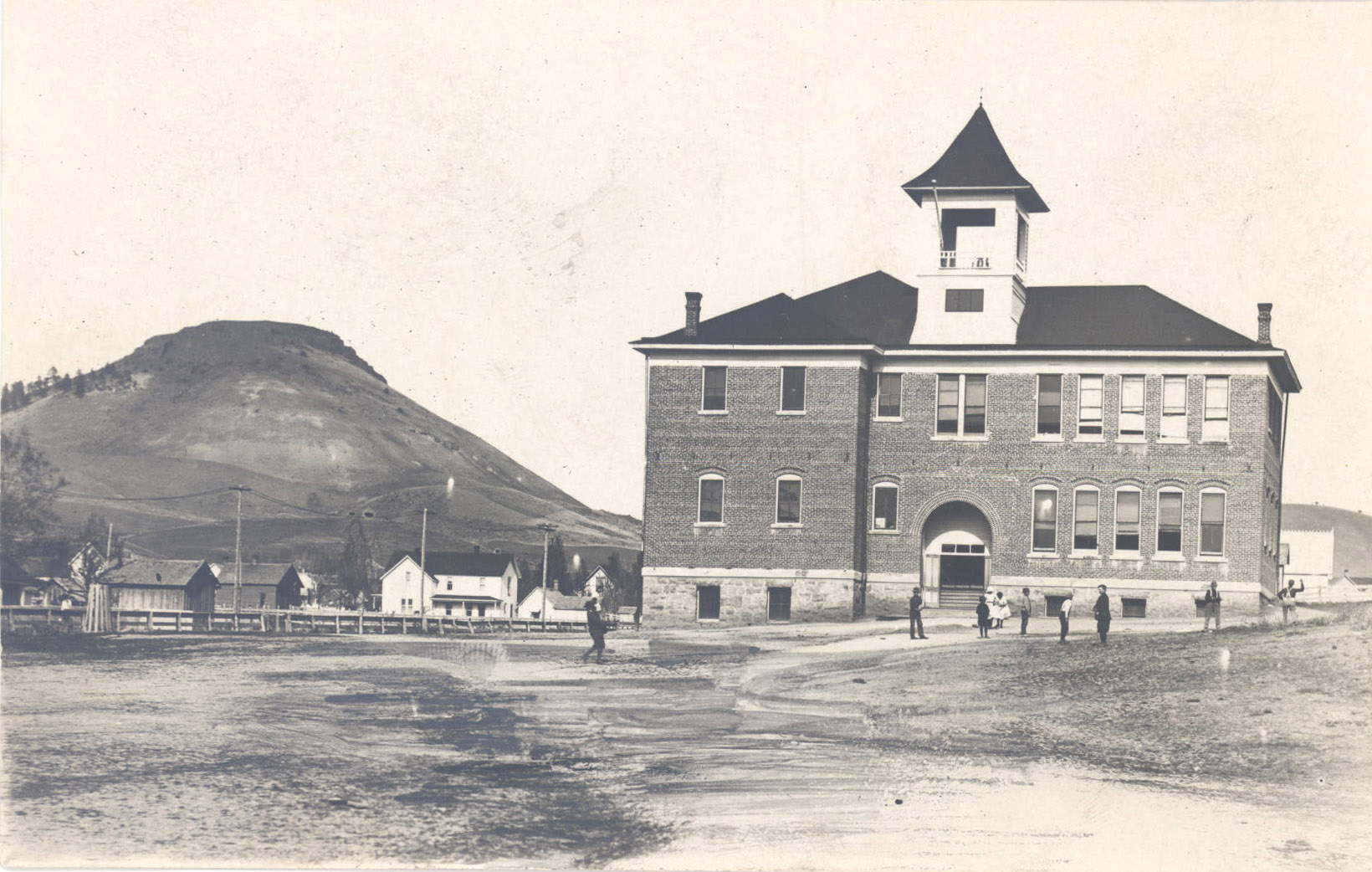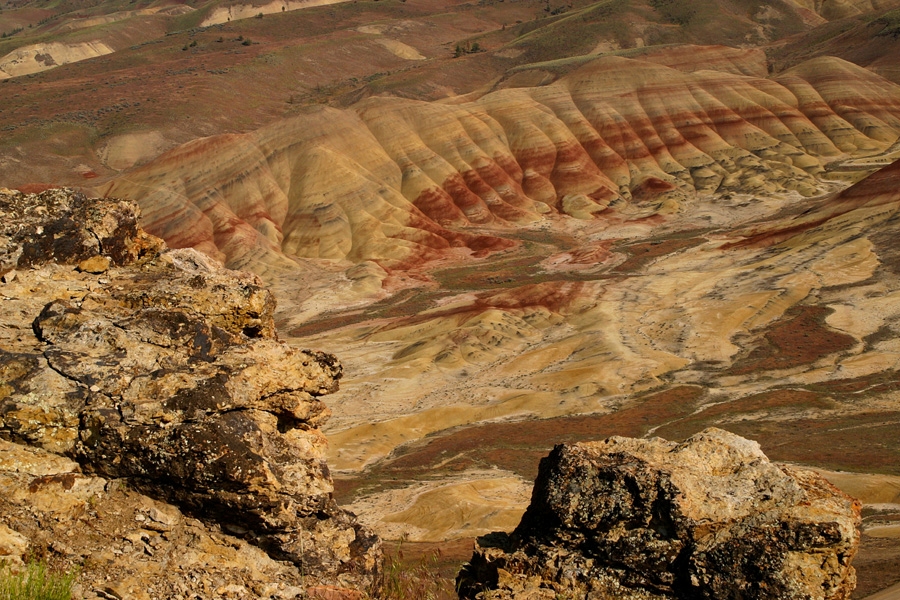The town of Fossil is the county seat of Wheeler County and the cultural and economic piston for a large geographical area. The town comes alive during the summer months when it hosts the Wheeler County Bluegrass Festival and a Cruz-In over the Fourth of July weekend, as well as the Wheeler County Fair and Rodeo the first week in August.
Before the arrival of EuroAmericans, Tenino and Wasco peoples, who are now enrolled as members of the Confederated Tribes of Warm Springs, lived in present-day north-central Oregon. These early residents often spent summers in the Blue Mountains and winters in the lowlands and along the rivers and streams of North Central Oregon. In the years stretching from the mid-1850s through the late nineteenth century, white pioneers resettled the area between present-day The Dalles and Canyon City.
The City of Fossil had its beginnings in 1876, when Thomas Benton Hoover, a native of Missouri, settled with his family in 1870, about two miles north of the eventual town site, and began farming. He opened a post office at his ranch, which he named Fossil after some early fossils found in the area. The area continues to attract thousands of visitors to the open fossil bed behind Wheeler High School and the nearby John Day Fossil Beds National Monument.
In 1881, Hoover and his friend Thomas Watson built a store at the confluence of Butte and Cottonwood Creeks, a site they believed was better suited for a town. They moved the post office there, and the following year George and W.S. Thompson opened a General Mercantile. When the Thompson brothers platted the town, the City of Fossil began to take shape.
As the 1880s progressed, more businesses opened, and the town grew. A school was established in 1882, and Methodist, Baptist, and Catholic churches opened their doors. By the late 1880s, the population of the community was more than two hundred people. Articles of incorporation for the town were approved by the Oregon legislature, and Fossil’s first city council meeting was held on March 4, 1891.
In 1899, Wheeler County was established, carved out of portions of Gilliam, Wasco, and Grant Counties, and Fossil was selected as the county seat. A water company served city residents from a gravity-flow system located two and a half miles from the city, and the Inland Telephone and Telegraph Company received a franchise from the city in 1899. In the first decade of the twentieth century, the Wheeler County Courthouse was completed, an electric company was formed, the first bank in Wheeler County opened, and Wheeler County High School opened its doors to students.
By this time, Fossil had many fraternal organizations, including the Masons, Eastern Star, the Odd Fellows, and the Rebekahs, which were an important part of community life. Through the 1910s and the 1920s, the city expanded with improved telephone and library service, and the present grade school was built to serve students in elementary through high school. In 1920, orator and statesman William Jennings Bryan visited Fossil, speaking from the steps of the courthouse.
From 1927 to 1978, the City of Fossil shared the riches of its portion of the Wheeler County with the town of Kinzua, a company-owned logging town some seven miles east of town. Fossil boomed during those years, reaching a population of more than eight hundred, but when the Kinzua Company closed the mill and the town in 1978, the population and commercial activities of the area were immediately affected. Enrollment at the high school in Fossil dwindled by half within a few years, and residents traveled to the Bend area, The Dalles, and beyond for grocery and other shopping.
The economic climate of Fossil in the twenty-first century is similar to that in other small, remote towns in Oregon and the United States. The town gets by with some farming and ranching, a small logging industry, a thriving downtown business district, tourism, and a good deal of government support for the community’s infrastructure and public schools. Today, Fossil’s population has stabilized at about 447 residents.
-
![]()
Freight team in front of Fossil Hotel.
Courtesy Oregon Hist. Soc. Research Lib., OrHi24755
-
![]()
Fossil, Oregon (Photo by Benjamin Gifford).
Courtesy Oregon Hist. Soc. Research Lib., 349
-
![]()
An aerial photograph of Fossil.
Courtesy Oregon Hist. Soc. Research Lib., ba013392
-
![]()
Fossil Public School.
Courtesy Oregon Hist. Soc. Research Lib., 65916
-
![]()
Welcome to Fossil sign, May 2025.
Courtesy Dallas Hyatt
-
![]()
Wheeler County Courthouse, Fossil, May 2025.
Courtesy Dallas Hyatt
-
![]()
Fossil Elementary School, May 2025.
Courtesy Dallas Hyatt
Related Entries
Map This on the Oregon History WayFinder
The Oregon History Wayfinder is an interactive map that identifies significant places, people, and events in Oregon history.
Further Reading
Stinchfield, McLaren E., and Janet L. Stinchfield. The History of Wheeler County. Dallas, Tex.: Taylor Publishing Co., 1983.
Fussner, F. Smith. Glimpses of Wheeler County's Past. Portland, Ore.: Binford & Mort, 1975.

